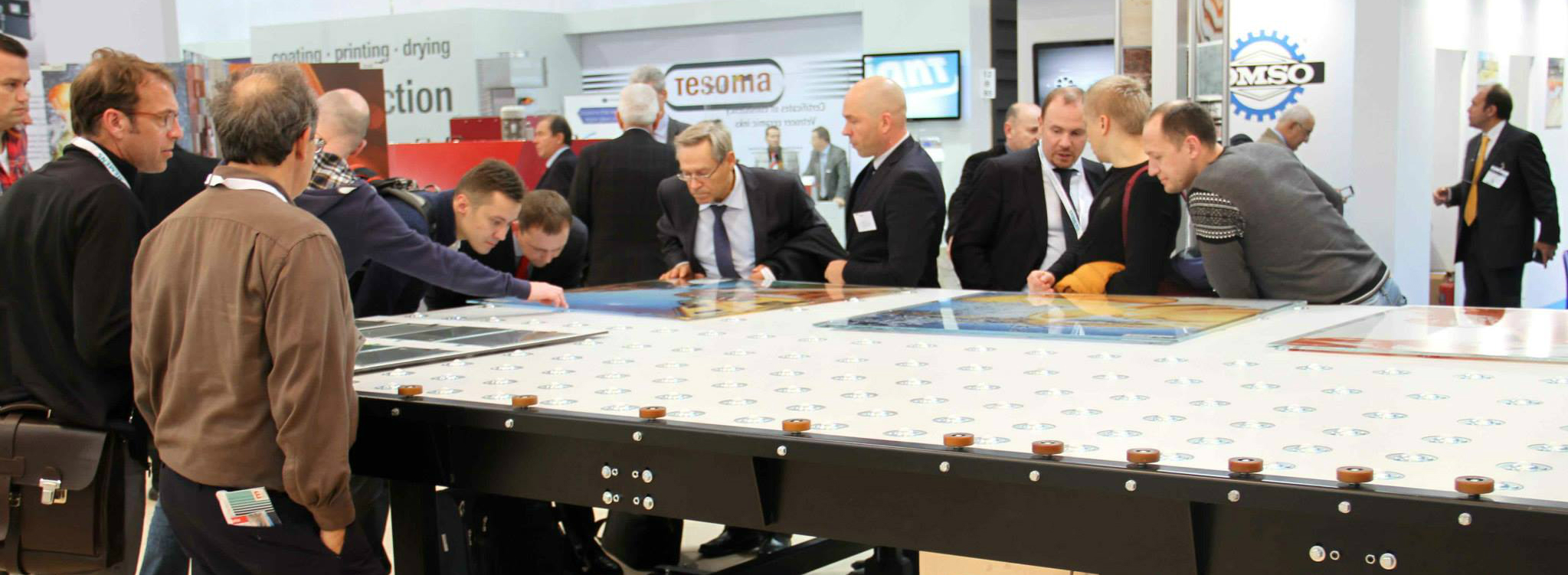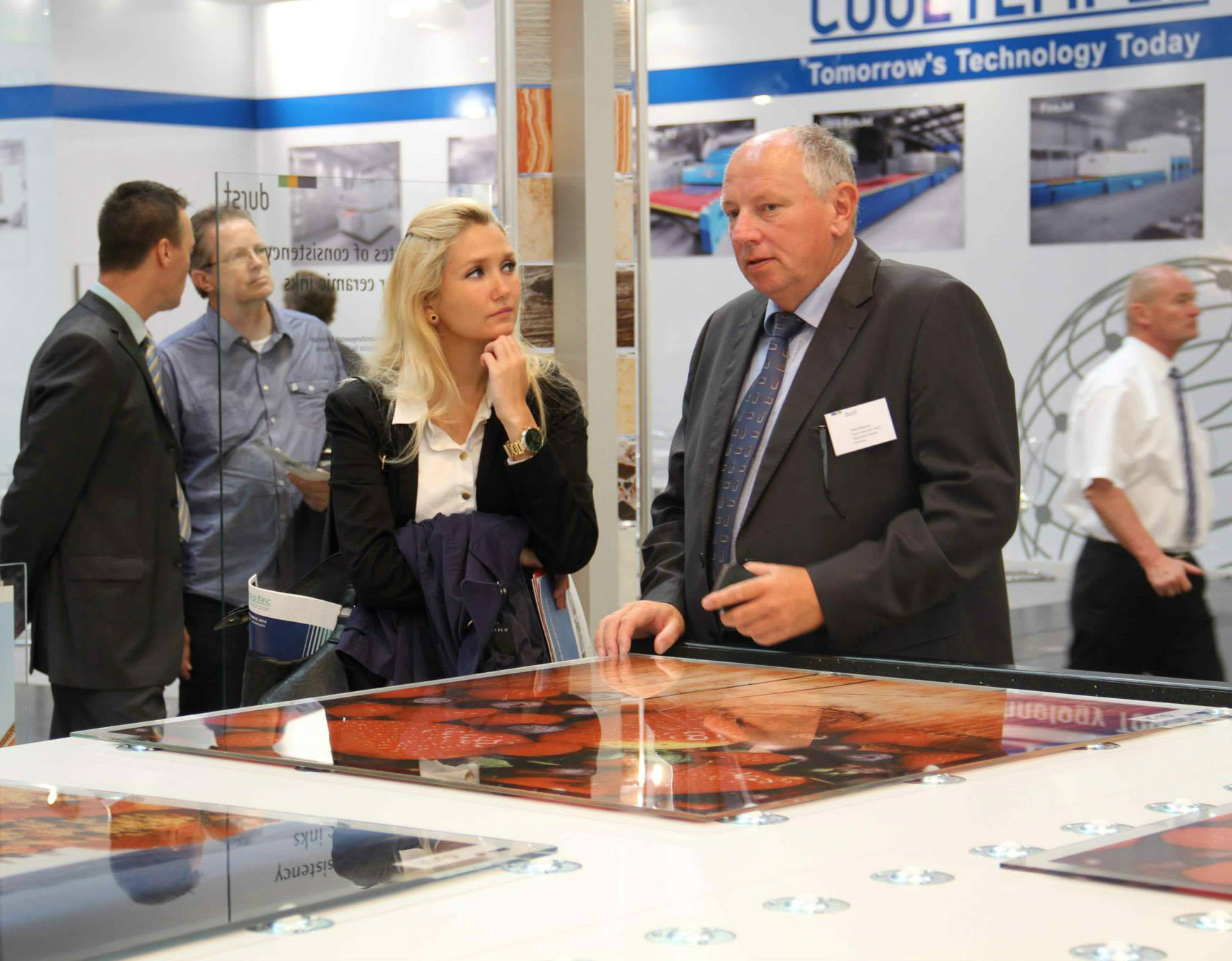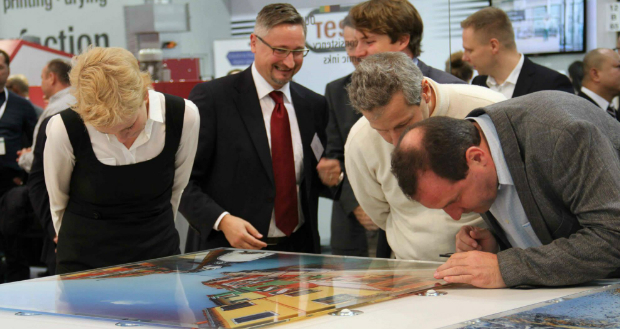
Durst shows off its new glass printer at Glasstec 2014 in Düsseldorf
Digital inkjet manufacturer DurstOne has challenged one of the last bastions of screen printing , pitching its new glass printer series to commercial printers looking for extra revenue streams. The company says digital technology looks set to make printed decorative glass more affordable for both commercial and domestic design in partition walls, worktops or back walls in kitchens, shower screens, shop fittings and the like. While screen printing requires a pricey metal screen for each colour, with each colour requiring drying or baking before the next is applied, running the risk of the second or third colours printing out of register due to a change in the material after tempering; Durst says its inkjet glass printers use ceramic inks applied directly onto the glass.

On display: Durst’s Rho Vetrocer glass printer
Its new Rho Vetrocer glass printer, unveiled at Glasstec 2014 in Düsseldorf in October, binds the ink to the glass permanently with a baking process inside an external oven, at a temperature between 680°C to 700°C – meaning the ink becomes part of the glass. The machine can produce small and one-off jobs, or medium and large volumes, without the need to replace templates as in screen printing. The process does require a washing and drying unit to clean out dust, grease, finger prints, zinc and packaging from the glass; the company also supplies transport belts, baking oven and a loading and swivelling table to create a full line. The flatbed supports widths of 2500mm, with work underway on a wider version for up to 3300mm. The series has a symmetrical (mirrored) printing head arrangement, to prevent colour shifts and banding, and the Vetrocer 250 model prints in 80dpi. The entry level model, the Rho Vetrocer Basic, prints at about 25sqm an hour, while the Presto model, with twice as many modules, prints at around 55sqm an hour; and the top-end Vetrocer HS – with four times the modules – reaches 105sqm an hour. Durst says the technology is will open creative opportunities for architects and designers as well as commercial printers – who have the printing know-how, Photoshop and colour management skills to capitalise on a market that is growing in Europe, and likely to hit Australia in the near future.


